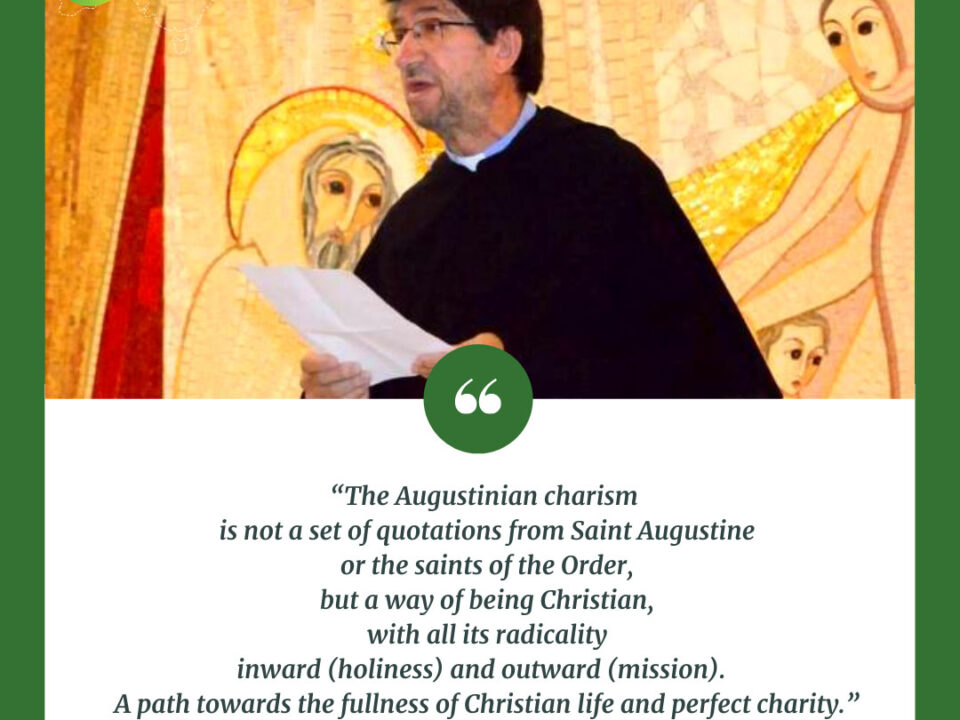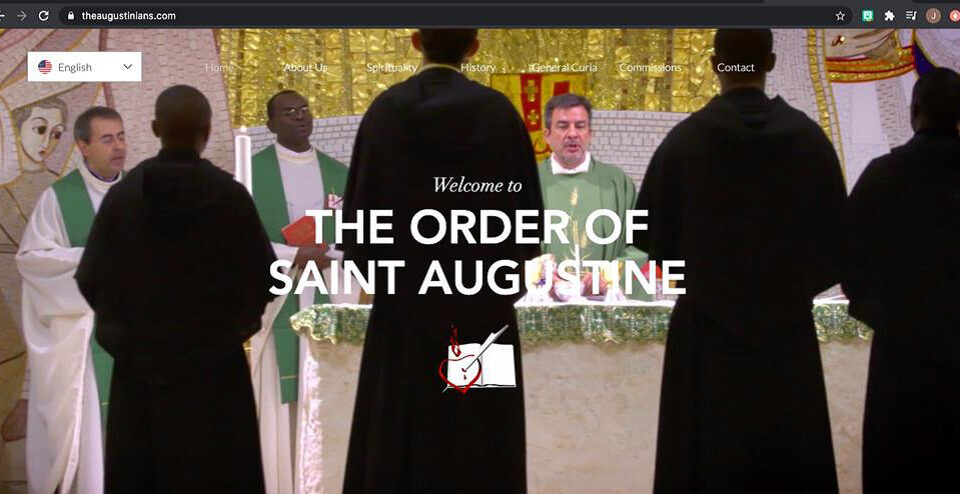

Pilgrimage to San Gimignano
Published: 13 November 2013
For three decades the ancient Augustinian monastery at San Gimignano, a few hours’ drive from Siena and Florence in Tuscany, has been an appreciated destination of Augustinian pilgrim and youth groups generally, and especially Augustinian parish and school groups and individual travellers from Australia.

This has included Province-wide pilgrim groups, and staff/student groups involving both Australian Augustinian colleges. As well, a number of Australian Augustinians have spent sabbatical time there for directed study about St Augustine. As well as hospitality (the monastery has for centuries been on the centuries-old Via Francigena trans-Alpine pilgrim route from Canterbury in England to Rome) in medieval monastic surroundings, the monastery offers a prayerful atmosphere. The small number of Augustinians in the community provide directive assistance to retreatants.

The Augustinian church and monastery at San Gimignano, Tuscany, Italy.
The monastery building itself has endured some difficult periods in its long history. In the year 1272 Augustinian friars settled about five kilometres outside of San Gimignano in a small village called Racciano. The house experienced ongoing difficulty because the area was often pillaged by troops from the nearby Republic of Pisa. Also because they were experiencing financial difficulties there, the friars in 1280 asked if they could move within the protection of the city walls of San Gimignano that were being constructed at that time. The town council of San Gimignano donated fifty bushels of slaked lime and 20,000 bricks for the construction of an Augustinian house (convento) that actually had one of its sides incorporated into the city wall.
Whereas Saint Augustine’s church was blessed in 1298, the three sides of the convento that with the church now define the quadrangular cloister (clausura, patio) were constructed in 1465. Credit for building the cloister goes to the Prior Fra Domenico Strambi O.S.A., a theologian and patron of the arts. He also decorated the church in Renaissance style.

Cloister and church’s nave at the Augustinian Monastery of San Gimignano.
The monastery was taken over in 1863 by the Italian government, as were almost all religious houses on the Italian peninsula. The building was used by the Bersaglieri division of the Italian Army. (The former large Augustinian monasteries in Perugia and at Santo Spirito in Florence are still used by the army.) In 1927 the government allowed the Order to return, but the site is government property for which the Order pays rent. The Augustinians who arrived in 1927 included Brother Giuseppe Frediani O.S.A. and Father Giuseppe Nannini O.S.A., who were uncle and nephew respectively.
In the Second World War some of the convento was used by the Fascist SS police, and it was where these “Repubblichini” detained and interrogated the townspeople. During the aerial bombardments of the town in 1944 two hundred townspeople took refuge in the tunnels under the monastery. A police station of Carabinieri remained in part of the building until 1958. From 1948 to 1968 the convento was used as the novitiate for candidates to the Order in Italy.
Today the Convento is an acknowledged centre of Augustinian spirituality. For twenty years it has been administered by Fr Brian Lowery O.S.A. from the United States of America, with other friars assisting. The monastery attracts many tourists because of the fresco series on the life of St Augustine of Hippo that was painted in an alcove behind the altar in the monastic Church of St Augustine in the years 1464-1465 by Benozzo Gozzoli.



